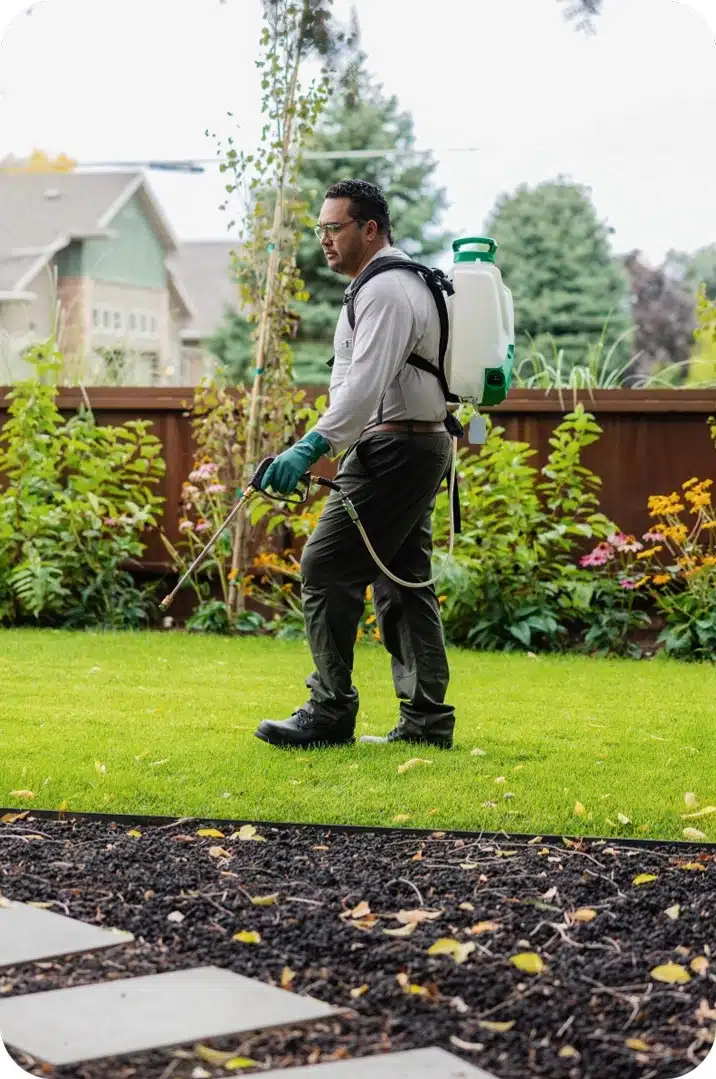Experienced A1 Exterminators Charlotte NC - Quick and Trustworthy Solutions
Experienced A1 Exterminators Charlotte NC - Quick and Trustworthy Solutions
Blog Article
Bed Insect Therapy Breakdown: Comparing Chemical Vs. Non-Chemical Solutions
In the world of insect control, especially when dealing with the persistent concern of bed insects, the option in between chemical and non-chemical therapy solutions can be a crucial one. Both methods use distinctive benefits and disadvantages, affecting variables such as performance, safety factors to consider, and general cost. By examining the nuanced details of each method, a clearer understanding of which path to pursue in dealing with a bed pest infestation can be achieved.
Effectiveness of Chemical Therapies
Chemical treatments for bed pest invasions have actually been widely recognized for their potent and rapid efficacy in getting rid of these pests. When taking into consideration the effectiveness of chemical treatments, it is crucial to comprehend that they can offer a quick and detailed service to a bed pest issue.
Furthermore, chemical therapies have the advantage of providing residual results, indicating that they can continue to eliminate bed insects even after the preliminary application. This residual action is specifically helpful in combating any possible re-infestations. Furthermore, the fast activity of chemical treatments can bring relief to people dealing with serious bed pest infestations, enabling them to gain back control of their space quickly.
Safety Problems With Chemical Solutions
One important element that requires mindful consideration when making use of chemical solutions for bed insect treatment is ensuring the security of residents and the setting. Exposure to particular chemicals utilized in bed pest therapies can lead to breathing issues, skin inflammation, or various other negative reactions, specifically in individuals with pre-existing problems or sensitivities.
Additionally, the environmental impact of chemical options is another considerable consideration. Some chemicals used in bed bug therapies might be hazardous to advantageous pests, wildlife, and environments if they seep right into the dirt or water supply. It is important to make use of chemical treatments carefully, complying with safety guidelines, and considering much less harmful options to minimize these risks and guarantee the secure and effective administration of bed pest problems.
Benefits of Non-Chemical Strategies
Considering the prospective security worries and ecological impact related to chemical solutions for bed bug therapy, checking out non-chemical techniques offers an encouraging choice with several distinctive advantages. Non-chemical approaches supply a more secure option for families, specifically those with individuals, kids, or animals sensitive to extreme chemicals. These strategies eliminate the risks of direct exposure to poisonous compounds, decreasing the possibility for negative health and wellness impacts. Additionally, non-chemical treatments are ecologically friendly, as they do not contribute to air or water air pollution, making them a sustainable selection for bug control.
Additionally, non-chemical remedies can be effective in targeting bed pests, consisting of hard-to-reach locations where chemical treatments might not penetrate. Techniques investigate this site such as warmth therapy, vacuuming, steam cleansing, and mattress encasements offer thorough obliteration without using harmful chemicals. In addition, non-chemical strategies can be much less disruptive, needing marginal preparation and allowing for quicker reentry into treated locations. In general, choosing non-chemical bed pest therapy approaches not only focuses on safety and security and ecological security yet also makes sure reliable and thorough parasite control.
Limitations of Non-Chemical Treatments

Additionally, non-chemical treatments usually require several applications to attain successful obliteration. This can be lengthy and may not always ensure full elimination of all bed bugs and their eggs, especially in concealed or hard-to-reach areas.
Moreover, the success of non-chemical therapies heavily counts on proper implementation and thoroughness, which can be challenging for people without professional competence. Poor application of non-chemical approaches might cause incomplete removal, causing relentless problems and the requirement for added therapies.
Therefore, while non-chemical treatments have their advantages, it is important to recognize these constraints and consider them when determining the most efficient method for taking care of bed bug invasions.
Cost Contrast: Chemical Vs. Non-Chemical Options
Given the limitations related to non-chemical treatments, a crucial aspect to examine in the context of bed insect management is the cost contrast between chemical and non-chemical choices. Chemical treatments usually include the application of insecticides by experts, which can vary from $250 to $900 per space, depending upon the seriousness of the infestation and the dimension of the area to be dealt with. In contrast, non-chemical therapies like warm therapy or heavy steam can be a lot more costly, with costs varying from $1,000 to $6,000 for an entire home. While the initial cost of chemical therapies may seem reduced, several therapies may be called for to completely eliminate the invasion, potentially increasing the overall price. On the other hand, non-chemical alternatives might give a much more sustainable and eco-friendly service, although they can be a fantastic read cost-prohibitive for some people. Eventually, when considering the price of bed bug therapy choices, it is important to consider the upfront costs against the effectiveness and lasting sustainability of the chosen technique.
Verdict

Thinking about the possible safety worries and ecological impact linked with chemical options for bed bug therapy, discovering non-chemical methods presents an encouraging option with several unique advantages.Offered the limitations associated with non-chemical therapies, a vital facet to evaluate in the context of bed bug administration is the price contrast between chemical and non-chemical options. In contrast, non-chemical treatments like heat therapy or heavy steam can be a lot more pricey, with prices varying from $1,000 to $6,000 for a whole home. While the preliminary price of chemical therapies might appear reduced, numerous treatments may be needed to completely remove the invasion, possibly enhancing the general expense.In final thought, when comparing chemical and non-chemical bed bug treatment alternatives, it is necessary to take helpful hints into consideration performance, safety and security, advantages, constraints, and cost.
Report this page